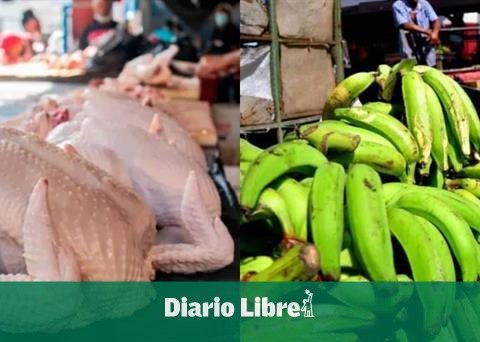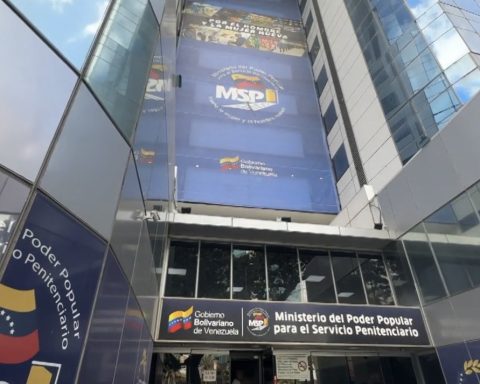Like thousands of families on the outskirts of Santiago de Cuba, Eugenio lives in a settlement that has no electricity, water or sewage. The houses, located behind the Micro 9 buildings in the José Martí district, are made of scraps of wood with pieces of cardboard, tolas zinc and dirt floor.
“I arrived and I planted in a grassy field, “says this 29-year-old custodian about his installation on this site with his wife, Victoria, three years ago.” We both needed a place to settle because I lived with my mother in a quarters in Paseo Martí. Piled up in a room, five people lived together, and my wife’s family was going through an even worse situation. “
The houses in this neighborhood they call them come and put, explains Eugenio, “because you are simply looking for a space and, if you find it, you put four pieces of sticks, you tie a wire to it as a fence and to build your own”. But now, he clarifies, there is hardly any place to be found: “Everything is full.”
A surprising detail is that homes in these places are in high demand. “For my own house, even with a dirt floor, built with scraps of zinc, cardboard and fenced with black shortcut, they have offered me up to 50,000 pesos,” says Eugenio, who has rejected the offers because he would have to put more than 150,000 additional pesos to aspire to buy at least one apartment, something impossible for their finances.
The job of custodian of the network of parks in the city reports to this young man, who has a training as a skilled turnery worker, a salary of 2,200 pesos. To have extra money, he sells crates made from sacks of rice, hand-sewn by his wife. “In these years we have only been able to equip ourselves with a black and white television for the little ones and a radio, and we are saving to see how we buy a Creole cold (refrigerator), because we plan to have a baby soon and this team is important, “he says.
The housing situation in Cuba is one of the problems that the Revolution undertook to solve when it gained power. However, after 62 years, the situation is increasingly critical and, on the outskirts of the cities, these types of settlements continue to proliferate in difficult conditions.
In Santiago de Cuba, examples of this are not only Micro 9, but Altamira, Marimón, Indaya, La Risueñita, El Caney or Chicharrones. From a housing fund of 159,696 houses, according to official data, this city has 48,579 houses in poor condition.
In addition, the province this year you have breached your construction plan housing, which violates the provisions of Article 71 of the Constitution, which recognizes “the right to adequate housing and a safe and healthy habitat.”

As Eugenio and Victoria do not have a property registry of the house, they also do not have access to their own supply book, and each one brings their food from their official addresses. Neighbors sell food and other products on the street and in stalls that they set up at the entrances of the houses.
Outside of the city’s infrastructure, services such as barbershops and manicures are performed in this place by people at home. “This is a hamlet with several hundred houses and yet there are no shops, clinics, bakeries or anything. The closest school is about a kilometer from here,” laments Eugenio.
And how do they get electricity? “The electrical wiring here is clothesline and they are illegal installations on rustic poles, which are connected to the electrical network and people are pulling cables in an improvised way, “confesses the young man.” All this has created a low voltage zone. For example, in my house, if I turn on the electric stove after six in the afternoon, the lights go out. “
The conversation is interrupted by a young woman dressed in black with a backpack on her back and sports shoes on the handlebars of her bicycle. “Neighbor, I have new tennis shoes, from 41 to 44, of various colors, at 4,000 pesos,” he offers. Eugenio replies: “I am clapping, my friend, more plucking than the sleeve of a vest. “
Victoria, who is only 23 years old and a housewife, is most affected by the lack of water. “Cooking and washing is a problem,” he explains. “We have two old tanks that, saving barely enough for three days. We live carrying buckets, because there is no drinking water service here. We bring it from a neighbor’s house that comes through a hose.”

The problem with water is not only the supply, but also the drainage. When you wash or scrub, Victoria says, you have to be very careful that dirty water does not fall into the pit they have, to prevent it from filling up. “Once it overflowed and I don’t even want to remember, the dirt floor was soaked with sewage water and the plague was horrible.”
The situation worsens precisely these days, in the rainy season. “Everything is flooded, the road fills with mud and you have to go out with old boots or shoes, and then change to go out to the paved street. You have to take the children loaded to go to school and the older ones arrive muddy just like their parents, “says the young woman.
Not to mention security, which the Cuban Government also tends to boast about as an achievement of the Revolution. Victoria denies it: “In this place a lot is robbed from houses and especially at night. I feel panic when my husband has to stand guard at night, I had to find a dog at least to bark.”
“What we are experiencing is not poverty or misery; it is a ruin!” Exclaims Eugenio. He reproaches the authorities for their indifference towards all these “young people like us” who live in those neighborhoods abandoned by the State. “We want a change and we are going to say it next November 15.”
________________________
Collaborate with our work:
The team of 14ymedio He is committed to doing serious journalism that reflects the reality of deep Cuba. Thank you for joining us on this long road. We invite you to continue supporting us, but this time becoming a member of our journal. Together we can continue transforming journalism in Cuba.


















